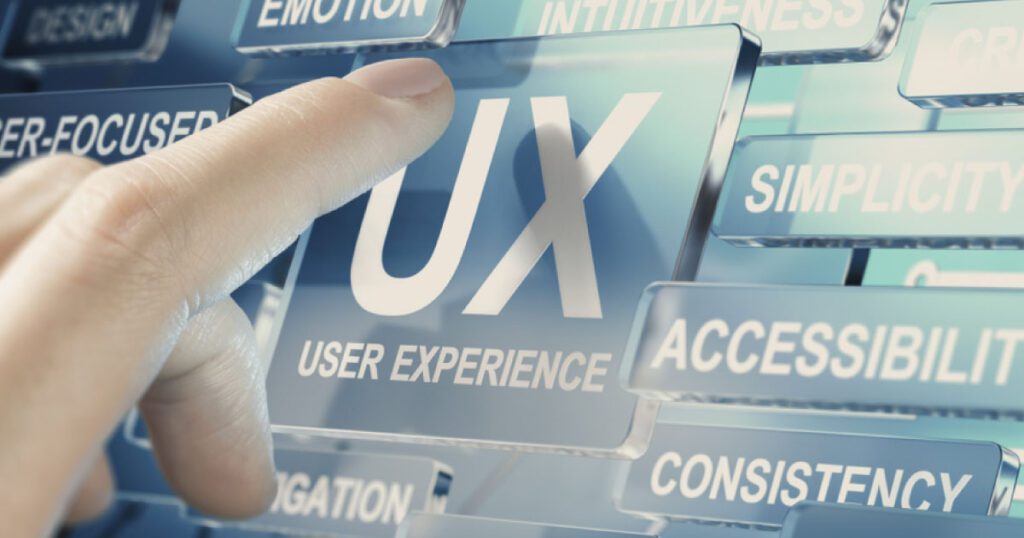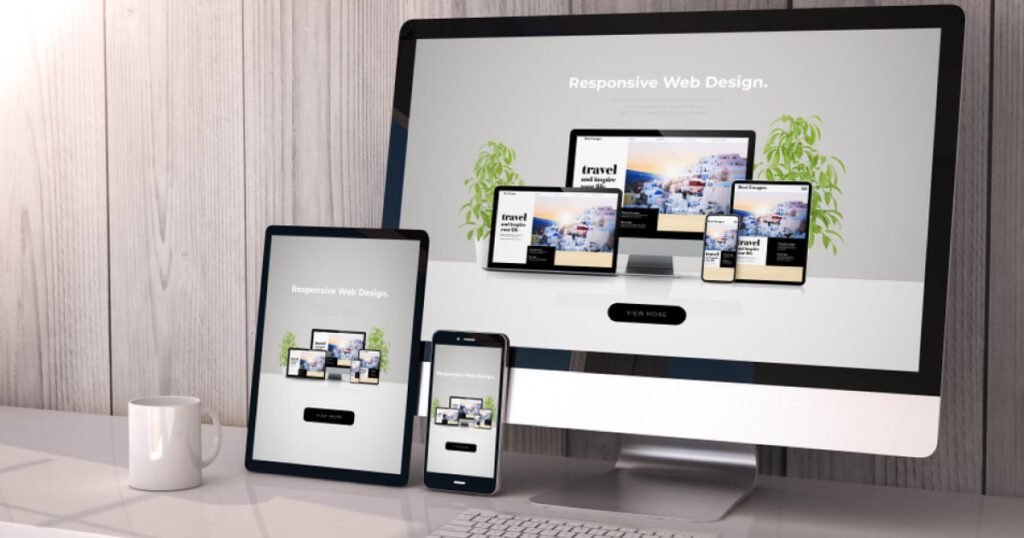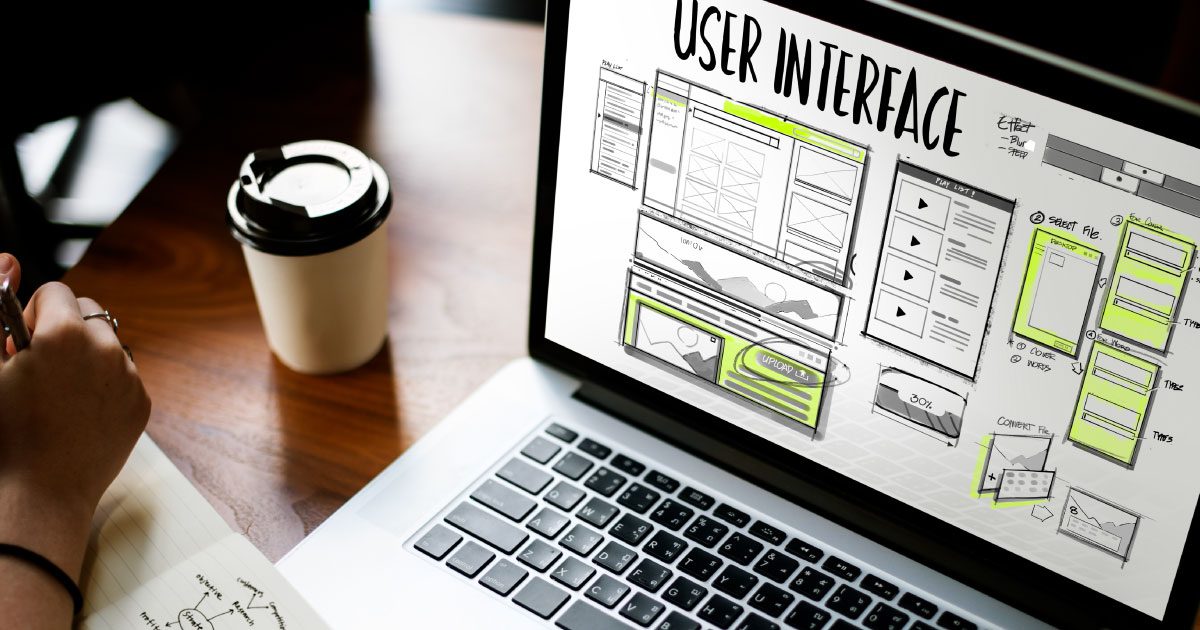Introduction
Knowing the difference between UI UX and graphic designer in the current design landscape is necessary especially to a novice who has yet to decide the path they should go on. Up until recently, design has always been about graphic design but today the current design landscape has drawn a line on the different aspects of design which includes graphic design, User Interface (UI) and User Experience (UX). The difference between UI UX and graphic designer can be seen in their scope of work or design focus, the tools and technology the designers use, and the various skillset and training required to be a professional or be able to work as a designer in a particular field. Graphic designers usually deal with communicating a brand message or identity to a particular group of people that resonates with them, UI and UX designers are set on creating user centric and intuitive digital experiences. Both are equally important in the design landscape even though they focus on different domains of the design process. Although the difference between UI/UX and graphic designers can be obvious once you grasp their essence, their domains usually overlap, in that designers usually work together to produce visually stunning and user centric designs that resonates with brands and people. It is important to note that understanding the differences and interconnectedness of the design landscape allows for a more holistic design approach. This article explores the difference between UI/UX designer and graphic designer as well as how they connect with each other in the design process to bring out the best.
Definition and Overview
Graphic Designer
A graphic designer is a professional who uses color, fonts images, and shapes to create visual contents that communicates a particular message to a particular group of people or elevates a brand’s identity through the use of visual elements. Their usually make logo, posters, book covers, brochures, advertisements, print ads, signage, banners, product packaging etc. Before a graphic designer starts creating designs, they need to communicate with clients to understand their requirements and expectations, meet and collaborate with the appropriate departments.
They also need to conduct research choose colors, images and fonts that is the appropriate design elements for the layout, use software tools and technology like Illustrator, Abobe Photoshop, InDesign, Canva, etc., to make illustrations and visual elements, collaborate with clients and other departments to retouch and refine designs. They are also responsible for creating visual materials to aid a marketing effort, creating an image to go with social media posts, formalizing a print advertisement's layout, making corporate logos and picture editing for digital signage.
User Interface (UI) / User Experience (UX)
These professionals usually focus on how users interact with and see a product. UX designers are usually concerned with the user interface of apps and websites, that is, how the user feels when using the product. This is why UX designers focus on creating user centric designs to address the needs and wants of users when using the product and enhance their overall experience with it. To comprehend user wants, behaviors, and pain spots, they carry out user research. The designers develop user personas, user flows, and information architecture based on their findings.

To provide a seamless and satisfying user experience, they optimize the product's navigation, interactions, and usability. UI designers are responsible for the graphical aspect of apps and websites. They organize page layouts, choose color, fonts and images, designing interactive features like text fields, scrollers, toggles, buttons, and drop-down menus; creating detailed wireframes and layouts to demonstrate the final design. UI designers also focus on the product's appearance and feel, create the font, buttons, icons, and other graphical elements, make sure the design is appealing to the eye, consistent, and in tune with the brand's identity.
How to tell the difference between UI UX and graphic designer
Design Focus

One can tell the difference between UI UX and graphic designer in their design focus. On one hand, the main goal of graphic design is to produce visual content for different mediums. These include a variety of elements, such as print materials, illustrations, and branding. Graphic designers are experts in creating visually appealing and captivating messages or images with visual elements that arouse strong emotions that resonate with a particular group of people.
On the other hand, enhancing the user's interaction and overall experience with a digital product or platform is the focus of UI/UX design marking the difference between UI UX and graphic designers. This includes creating user interfaces, making navigation simple, and improving general usability. In order to deliver a pleasurable and effective experience, UI/UX designers strive to create simple and straightforward user journeys. The goal of graphic design is to produce stunning, compelling visuals that convey a message. On the other hand, UI UX design is concentrated on developing user interfaces that are effective and meet users' demands and preferences.
Tools & Software

Another way to tell the difference between UI UX and graphic designer is through the tools and software they use in their respective design process. To realize their artistic concepts, graphic design experts often use a wide variety of tools and technologies. The Adobe Creative Suite, which includes applications like Illustrator and Photoshop, is a must-have in the toolbox of any graphic designer. Another popular program that offers powerful features for vector graphics and page layout is CorelDRAW. Graphic designers also use design software like Canva, Design Wizard, Visme etc.
Likewise, UI/UX designers use software designed specifically for their industry which can be used to tell the difference between UI UX and graphic designers. Among the tools that are considered industry standards include Sketch, Figma, Adobe XD, and InVision. Other design software they use are Axure, Webflow, Balsamiq, Craft, Proto.io, Framer X among others. These platforms make it easier for designers to perform activities like wireframing, prototyping, and user testing, allowing them to construct and improve digital interfaces precisely and effectively.
Skill set and training
The skill set and training required for the various aspects of design helps determine the difference between UI UX and graphic designer. On one hand, a skill set oriented toward producing aesthetically appealing content is feasible for graphic designers. This entails proficiency in color theory, typography, and layout design. They are skilled at choosing and combining fonts, comprehending the psychology of color, and organizing materials to create compositions that are harmonious and visually beautiful.
Graphic designers are also trained in brand communication, logo design and mockups, visual communication, typography design, vector illustration and caricature design, user experience, and interface design. Training in these areas helps graphic designers develop their skill set, bring out the creativity in them, and help them communicate brand messages through impressive graphic designs.
On the other hand, the goal of UI/UX designers is to create user interfaces that maximize interaction and enhance user satisfaction. Therefore, their skill set includes interaction design, user testing, prototyping, and wireframing. While prototyping enables the testing and improvement of user interactions, wireframing includes building the basic structures of digital interfaces.
Interaction design determines how consumers interact with the product, while user testing helps pinpoint areas that need improvement. Training courses for UI/UX designers normally include user-centric design, eye-catching interfaces, effective content structuring, user experience evaluation, responsive web design, intuitive interactions, wireframing and prototyping, accessibility, and inclusivity marking a world of difference between UI UX and graphic designers.
Target Market and Goal
Yet, another intriguing manner to notice the difference between UI UX and graphic designer can be seen in their target audience and goal of design. Graphic design primarily aims at a large audience and uses images to express ideas or evoke feelings. Graphic design can be utilized across a variety of platforms, such as packaging, branding, promotional materials, and advertising. Subsequently, the intent of graphic design is to create a powerful visual identity that appeals to a specific audience.
However, the goal of UI/UX design is to provide a specific audience interacting with digital platforms or products with a seamless and intuitive user experience. These platforms and products could be software programs, websites, mobile apps, or other types of digital interfaces. Ensuring that users can navigate efficiently is the goal.
Collaboration and Overlap Between Graphic Design and UI/UX Design
The Interconnectedness of Graphic Design with UI/UX
The difference between UI UX and graphic designer does not mean they cannot work together or but heads. Graphic design and UI/UX design collaboration and overlap. The disciplines of graphic design and UI/UX design frequently overlap to produce coherent and efficient design solutions bridging the difference between UI UX and graphic designers.
While UI/UX designers concentrate on user interactions, navigation, and overall user experience, graphic designers add their knowledge in visual aesthetics, branding, and messaging. This interdependence is especially clear on digital platforms where the visual components made by graphic designers must fuse smoothly with the functional components created by UI/UX specialists.
Real-World Examples of Collaboration
Website design: The difference between UI UX and graphic designers is bridged and comes in handy when creating a website. This is because, in the creation of the visual components for a website, such as logos, banners, and color schemes, graphic designers make sure they are consistent with the company identity. On the other hand, UI/UX designers concentrate on layout, user flow, and navigation to ensure a smooth and enjoyable browsing experience.
Mobile App Development: Another way the difference between UI UX and graphic designers is appreciated is in mobile app development. Designing icons, splash screens, as well as other visually appealing elements for mobile apps requires graphic designers to keep the intended audience in mind. In the meantime, UI/UX designers focus on button placement, screen flow, and the overall user interface to provide an intuitive and fulfilling experience.
E-commerce platforms: Building e-commerce platforms like Shopify is another way for the work difference between UI UX and graphic designers to be seen. While UI/UX designers optimize the checkout process, shopping cart experience, and overall user journey to improve conversions and user satisfaction, graphic designers conceive product images, banners, and promotional materials, creating lasting impressions on visitors and customers alike.
The Benefit of Understanding Both Areas for a Holistic Design Approach
Designers who are skilled in both graphic and UI/UX design have a broad skill set that enables them to tackle projects from a comprehensive point of view.
Seamless Integration: A designer with knowledge of both disciplines can make sure that the visual elements and functional interfaces are harmoniously combined. A more immersive and interesting user experience results from this.
Effective Communication: Communication between graphic designers and UI/UX designers is made easier by an understanding of both fields. This lessens the possibility of misunderstanding and encourages cooperation in the pursuit of a common goal. Making the final design impressive and satisfying.
Flexibility: Designers who are adept in both areas are more flexible and able to handle a larger range of assignments. Depending on the needs of the project, they can smoothly switch between developing visual content and improving user interfaces, making them vital players in every organization.
Customer satisfaction: since design usually has customers in mind, customer satisfaction is increased by a holistic design approach because it produces more thorough and efficient solutions. It displays a designer's capacity to take into account a project's aesthetic and practical features.
Career Paths & Opportunities for both design domains
Education and training for both roles.
Graphic design: A degree or associate degree in graphic design, fine arts, or a related discipline is a much-needed aspect of this field. Typography, color theory, illustration, and layout design are among the topics covered in the coursework. Additionally, it's essential to have knowledge of the relevant software (Adobe Creative Suite, CorelDRAW). Gaining a degree in graphic design gives you the chance to start constructing a portfolio of work to present to prospective employers and helps you develop fundamental job expertise while giving you a competitive advantage over your peers.
UI/UX designer: It is beneficial to have training in areas like interaction design, human-computer interaction, or user experience design. Wireframing, prototyping, and usability testing-specific courses and workshops are also essential. It's crucial to be proficient with the necessary UI/UX design software (Sketch, Figma, and Adobe XD). It is important to note that having a degree in UI/ UX design is not a requirement for landing a job in this field, it opens many doors of opportunity and career advancements in this field. Taking an accredited certification course from a recognized institution also works fine.
Market Insights
When it comes to market insights, the difference between UI UX and graphic designers can be barely noticed as they all work in almost the same industries, just slight differences in their pay and welfare benefits.
Graphics design: Advertising, marketing, publishing, print firms, ad agencies, web design firms, online and brick-and-mortar retailers, and non-profit organizations are just a few of the industries that continue to have an increasing demand for graphic designers. Starting at roughly $40,000 for entry-level jobs, salaries rise up to $70,000 or more for experienced designers. This domain of design also offers opportunities for growth and development.
UI/UX designers: With the growing emphasis on digital experiences, the demand for UI/UX designers is booming. Senior designers and UX leads often earn well over $100,000 a year, with entry-level employment starting at $50,000. It is anticipated that the field will keep expanding and provide many prospects for career progression. It is, however, worth noting that for all the design fields, the salary is dependent on factors like location, experience, and skill sets.
Transitioning Between Roles
Skill development: Focus on developing your skills in wireframing, prototyping, and user testing to make the switch from graphic design to UI/UX design. Learn how to use UI/UX design tools and keep up with current business trends. Doing this lessens the difference between UI UX and graphic designers giving way to impressive designs.
Portfolio development: Enhance your portfolio by adding any pertinent UI/UX projects or academic coursework. Include any user research or design experience you have had in your resume. The difference between UI UX and graphic designers becomes obscure when an individual blends both design skillset and showcases it.
Networking: Attend conferences, webinars, and workshops on UI/UX design to network and further your education. Connect with industry experts to gain knowledge and perhaps land mentorship or internship opportunities.
Freelancing and Side Projects: Work on side design projects or freelancing UI/UX projects to develop your skills and portfolio.
Conclusion
For designers to produce effective design solutions, it is essential to understand the roles of visual and UI/UX designers, as there is a difference between UI/UX and graphic designers. From the above article, it can be seen that while UI/UX designers concentrate on building user-centric digital experiences, graphic designers focus on creating aesthetically appealing material that resonates with a target audience. This partnership provides a seamless fusion of both design and functionality that resonates with the audience and encourages intuitive engagement. The difference between UI UX and graphic designers may become obscure as technology develops, giving rise to a new generation of designers with a broad range of abilities.



